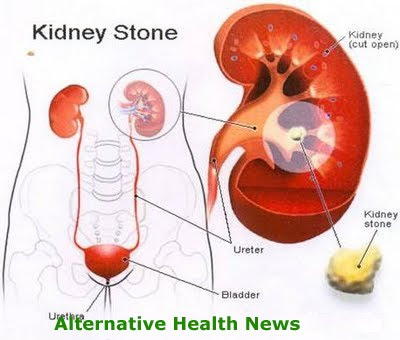
Sinus symptoms and signs are caused because of infection of sinus and resulting causes the swelling because of bacteria within the cavities of sinus.
The sinuses are the cavities which are open in the continuous connection with nasal openings which are free for both air and mucous. At this situation, sounds certain type of volume. When sinus gets blocked because of certain swelling and infectious air already present inside the sinus then this situation causes the sinus headache.
Another reason for sinus pain is that when nasal get blocked because of swollen and air unable to get into the sinus. Sinus spray is generally used as a treatment for the sinus infection which is sometimes prescribed and gotten over the counter. This spray is is useful for killing the bacteria and microbes which causes severe sinus infection symptoms.
There are four major pairs of the sinuses which are listed below:
Maxillary sinuses (behind the cheek bones)
Frontal sinuses (in the forehead)
Sphenoid sinuses (behind the eyes)
Ethmoid sinuses (between the eyes)
Types of Sinus infection:
Sinus infections are classified in 2 ways as given below:
Length of time
They are infectious or not.
Acute lasts within one month, where as sub acute takes one to three months to cure. And chronic infection lasts after the three months. Infectious sinus infections are normally caused because of virus, but there are fewer chances for causing the infection because of bacteria.
Environmental irritations and allergies may causes non-infectious. Environmental irritation is such as drugs, smoke etc. Chronic and sub-acute conditions are generally caused because of lack of or insufficient treatment for acute sinusitis.
Causes of sinus infection:
There are many different causes of sinusitis. One of the causes is that blocks the passage in the opening or the tumor removes by the surgery. Not only nasal sprays cause the infection but may also addictive Sometimes over the counter nasal sprays can not only cause infection, but can also be addictive. Illegal drugs such as cocaine and other types which are snorted throughout the nasal can cause the sinus infection and irritation.
Various types of bacteria are also responsible for causing the sinus infection. The cilia which are the small hairs present in the passage of the nasal and sinus cavities helpful for moving the mucous out of nasal area. These are damaged because of lack of humidity, smoke, or other different causes. When this occurs the mucous gets stagnates and perfect area becomes for the growth of the bacteria and starts the infection. Allergies to the food and other different substances may cause the food allergy.
Sinus infection symptoms and signs:
The general sinus infection symptoms are headaches, tenderness of the face and twenty five percent of the patients suffering from acute sinusitis have the fever also. Coughing, sore throat, and a greenish, cloudy, or yellowish nasal discharge are some of the signs of the sinus infection.
The other signs which are checked by the doctor for diagnosing are swollen areas near the eyes, nasal passage which becomes reddened, drainage from the nose that is similar to pus and facial areas over the sinuses that are tender to percussion. Additional information is also useful for diagnosis such as history of the patient and some tests such as a MRI, or the CT scan may also be takes place because these tests are good at illuminating the actual infection rather than an X-Ray.
The bacteria, fungi and virus are responsible for causing the sinus infection. Treatment is based on the type of the infection so good and early diagnosis is very necessary.
Following are some common sinus infection symptoms::
Pain in the forehead, jaw, teeth and cheeks, or between the eyes.
Headache, particularly first thing in the morning.
Swollen or inflamed tear ducts, eyelids, and other tissues surrounding the eyes.
Fever.
Congestion, sore throat, neck pain or cough.
Weakness and fatigue.
Treatment of Sinusitis:
Self-Care at Home:
Home treatment opens the sinuses and eases their dryness:
Promote drainage
Drink lot of water and hydrating drinks as like hot tea.
Take a stream 2 to 4 times in a day by bowel of a hot water but not take when it is on stove or simply use stream vaporizer. Inhale the steam near about ten minutes. Steamy, hot shower is also effective. Vicks Vapo Run can be added in to the water and then take a stream which is useful for opening the passageways.
Thin the mucus: Expectorants are the drugs which are helpful for expelling the mucus from the lungs and the respiratory passages. They help thin secreation of the mucus and enhancing drainage from sinuses. Guaifenesin is used very commonly. Over- the-counter (OTC) cough medications which are in liquid form or prescription tablets can also combined for reducing the sinus infection symptoms. For knowing the right combination just read out the label ingredients or asks to the pharmacists.
Relieve pain: For reducing the inflammation and pain the medications are used such as ibuprofen (Motrin and Advil are examples), naproxen (Aleve) and aspirin. These drugs are useful for opening the airways by reducing the swelling. Acetaminophen (Tylenol) can be used for fever and pain but it is not helpful for inflammation.
Medical Treatment:
The main goal of the treatment of sinus infection is reduce the inflammation and swelling in the nasal areas, removes the infection and support the drainage from sinuses and maintain the open sinuses. Medications are suggested for treating the sinus infection but antibodies are taken for at least 10 to 14 days.
If the infection is chronic then antibodies continues up to 21 days. Extreme chronic infection does not give response to the prescribed medications and therefore patients have to take the medications for long duration. Still there is no any effect of the medication then it is related to surgical procedure and need stay in hospital.
In case of the chronic sinus infection, some of the times infection extends up to brain and eventually causes the death. But this condition occurs very rarely and not occurs frequently.
If the proper treatment is provided and treated if treatment is sought in particular time then sinus infection cures immediately.
Alternative Health News
Read More
The sinuses are the cavities which are open in the continuous connection with nasal openings which are free for both air and mucous. At this situation, sounds certain type of volume. When sinus gets blocked because of certain swelling and infectious air already present inside the sinus then this situation causes the sinus headache.
Another reason for sinus pain is that when nasal get blocked because of swollen and air unable to get into the sinus. Sinus spray is generally used as a treatment for the sinus infection which is sometimes prescribed and gotten over the counter. This spray is is useful for killing the bacteria and microbes which causes severe sinus infection symptoms.
There are four major pairs of the sinuses which are listed below:
Maxillary sinuses (behind the cheek bones)
Frontal sinuses (in the forehead)
Sphenoid sinuses (behind the eyes)
Ethmoid sinuses (between the eyes)
Types of Sinus infection:
Sinus infections are classified in 2 ways as given below:
Length of time
They are infectious or not.
Acute lasts within one month, where as sub acute takes one to three months to cure. And chronic infection lasts after the three months. Infectious sinus infections are normally caused because of virus, but there are fewer chances for causing the infection because of bacteria.
Environmental irritations and allergies may causes non-infectious. Environmental irritation is such as drugs, smoke etc. Chronic and sub-acute conditions are generally caused because of lack of or insufficient treatment for acute sinusitis.
Causes of sinus infection:
There are many different causes of sinusitis. One of the causes is that blocks the passage in the opening or the tumor removes by the surgery. Not only nasal sprays cause the infection but may also addictive Sometimes over the counter nasal sprays can not only cause infection, but can also be addictive. Illegal drugs such as cocaine and other types which are snorted throughout the nasal can cause the sinus infection and irritation.
Various types of bacteria are also responsible for causing the sinus infection. The cilia which are the small hairs present in the passage of the nasal and sinus cavities helpful for moving the mucous out of nasal area. These are damaged because of lack of humidity, smoke, or other different causes. When this occurs the mucous gets stagnates and perfect area becomes for the growth of the bacteria and starts the infection. Allergies to the food and other different substances may cause the food allergy.
Sinus infection symptoms and signs:
The general sinus infection symptoms are headaches, tenderness of the face and twenty five percent of the patients suffering from acute sinusitis have the fever also. Coughing, sore throat, and a greenish, cloudy, or yellowish nasal discharge are some of the signs of the sinus infection.
The other signs which are checked by the doctor for diagnosing are swollen areas near the eyes, nasal passage which becomes reddened, drainage from the nose that is similar to pus and facial areas over the sinuses that are tender to percussion. Additional information is also useful for diagnosis such as history of the patient and some tests such as a MRI, or the CT scan may also be takes place because these tests are good at illuminating the actual infection rather than an X-Ray.
The bacteria, fungi and virus are responsible for causing the sinus infection. Treatment is based on the type of the infection so good and early diagnosis is very necessary.
Following are some common sinus infection symptoms::
Pain in the forehead, jaw, teeth and cheeks, or between the eyes.
Headache, particularly first thing in the morning.
Swollen or inflamed tear ducts, eyelids, and other tissues surrounding the eyes.
Fever.
Congestion, sore throat, neck pain or cough.
Weakness and fatigue.
Treatment of Sinusitis:
Self-Care at Home:
Home treatment opens the sinuses and eases their dryness:
Promote drainage
Drink lot of water and hydrating drinks as like hot tea.
Take a stream 2 to 4 times in a day by bowel of a hot water but not take when it is on stove or simply use stream vaporizer. Inhale the steam near about ten minutes. Steamy, hot shower is also effective. Vicks Vapo Run can be added in to the water and then take a stream which is useful for opening the passageways.
Thin the mucus: Expectorants are the drugs which are helpful for expelling the mucus from the lungs and the respiratory passages. They help thin secreation of the mucus and enhancing drainage from sinuses. Guaifenesin is used very commonly. Over- the-counter (OTC) cough medications which are in liquid form or prescription tablets can also combined for reducing the sinus infection symptoms. For knowing the right combination just read out the label ingredients or asks to the pharmacists.
Relieve pain: For reducing the inflammation and pain the medications are used such as ibuprofen (Motrin and Advil are examples), naproxen (Aleve) and aspirin. These drugs are useful for opening the airways by reducing the swelling. Acetaminophen (Tylenol) can be used for fever and pain but it is not helpful for inflammation.
Medical Treatment:
The main goal of the treatment of sinus infection is reduce the inflammation and swelling in the nasal areas, removes the infection and support the drainage from sinuses and maintain the open sinuses. Medications are suggested for treating the sinus infection but antibodies are taken for at least 10 to 14 days.
If the infection is chronic then antibodies continues up to 21 days. Extreme chronic infection does not give response to the prescribed medications and therefore patients have to take the medications for long duration. Still there is no any effect of the medication then it is related to surgical procedure and need stay in hospital.
In case of the chronic sinus infection, some of the times infection extends up to brain and eventually causes the death. But this condition occurs very rarely and not occurs frequently.
If the proper treatment is provided and treated if treatment is sought in particular time then sinus infection cures immediately.
Alternative Health News
Read More
















